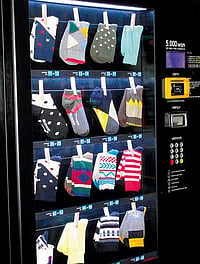Augmented Reality (AR) technology has finally found its “killer app”! For some time now, advocates of AR have battled the hype of virtual reality (VR). They have argued that AR can indeed be better than VR because users do not have to suspend disbelief and enter an artificial world. Instead, elements from the virtual world enter the real world, thus promising a more authentic experience. But, there haven’t been many takers. For well over a decade, AR has been playing second fiddle to VR, which has enjoyed a major resurgence in recent years, thanks to Oculus Rift, Samsung Gear and other affordable devices transporting viewers into exotic virtual worlds. but the time for AR has finally come, thanks to Pokémon Go.
What is so fascinating about Pokémon Go? To begin with, our mundane reality is augmented by exotic, animated, cute and colorful characters, not by some nerdy textual overlays that provide additional information about what we are seeing in the real world. Common mainstream applications of AR have typically focused on super-imposing textual information on a real-world artifact or location, much like a QR code. This required users to be highly motivated to seek information. And, it lacked the fun element.
Pokémon Go, on the other hand, is a lot of fun! It arouses curiosity by teasing users about the existence of creatures in their vicinity. The excitement is akin to going on a safari to spot animals in the wild.
When you do spot Pokémon characters, the experience is quite magical. They are animated versions of the creatures pictured in the popular trading cards, moving around in the real world, but visible only through smartphones. They are real only to the players with the app, but invisible to the uninitiated. Their presence is ghostlike, apparitional—a true mystical experience for those who have grown up on a steady diet of Pokémon cards and videogames.
The thrill of the find is quite gratifying, as evidenced by the wild popularity of Geocaching a few years ago, where users would look for hidden treasures using their GPS devices. But, unlike geocaching, the treasures in Pokémon Go are not some random objects, but pet-like characters familiar to most gamers.
When you see these characters, you want to watch them, follow them and capture them. This game allows you to do exactly that, and much more—help them evolve, form a team, battle other creatures and so on. There is an element of chance as well as challenge, of points and rewards, of skill and competition—classic features of a game. Gamification of the activity of finding and collecting Pokémon characters is at the heart of its appeal.
But, gamification alone does not explain its sudden and wild popularity. A case could even be made for Pokémon Go being the very antithesis of a game, in that it challenges two stereotypes associated with games and gamers—that game-play is a sedentary activity and gamers are not very social outside the game environment. Pokémon Go requires its players to be out and about in the real world—in fact, many rewards are built around demonstrating a certain level of physical activity measured by geographic distance. Perhaps more important is its social element. Strangers have bumped into each other in their common quest for Pokémon creatures and bonded as a result—a throwback to the pre-smartphone era when people on the streets used to look at others, greet and exchange pleasantries. In a way, it’s a game that restores what some earlier media took away from us and celebrates that which makes us innately human—to be physically And socially active in the real world.
The central concept behind the success of any kind of mediated reality is “presence.” We feel the presence of Pokémon creatures because they have entered our world instead of us going to their world. Not only have they come into our midst, but they are also making us value simple human activities such as walking and talking. In this day and age of “quantified self,” any excuse to walk a few extra steps is a welcome addition to our daily repertoire of activities. And, given our wholehearted acceptance of social media, our appetite for social contact has only grown. In this backdrop, the Pokémon creatures have indeed provided a license for young and old alike to engage in their quest, thus leading to the widespread adoption of the game.
Discussions at the annual meetings of the International Symposium on Mixed and Augmented Reality (ISMAR) have, for the last 14 years, been preoccupied with finding a killer app that can sell the technology to the masses. This September, at the 15th meeting in Merida, Mexico, the conversation will likely be different, focused on one central question: What can we learn from Pokémon Go’s success? Researchers and designers alike will be dissecting the key elements of the game and looking to apply them in future products. It’s not just the cuteness of game characters or their ability to arouse curiosity. It’s not just a treasure hunt or just a game with rules and rewards. It’s all these things rolled into one package by a unique sense of presence, whereby fictional characters enter our world and make us realize what it means to be human.
(S. Shyam Sundar is distinguished professor and founding director of the Media Effects Research Lab at Penn State University. He is editor of the Handbook of the Psychology of Communication Technology and editor-in-chief of the Journal of Computer-Mediated Communication.)
A shorter, edited version of this appears in print






















